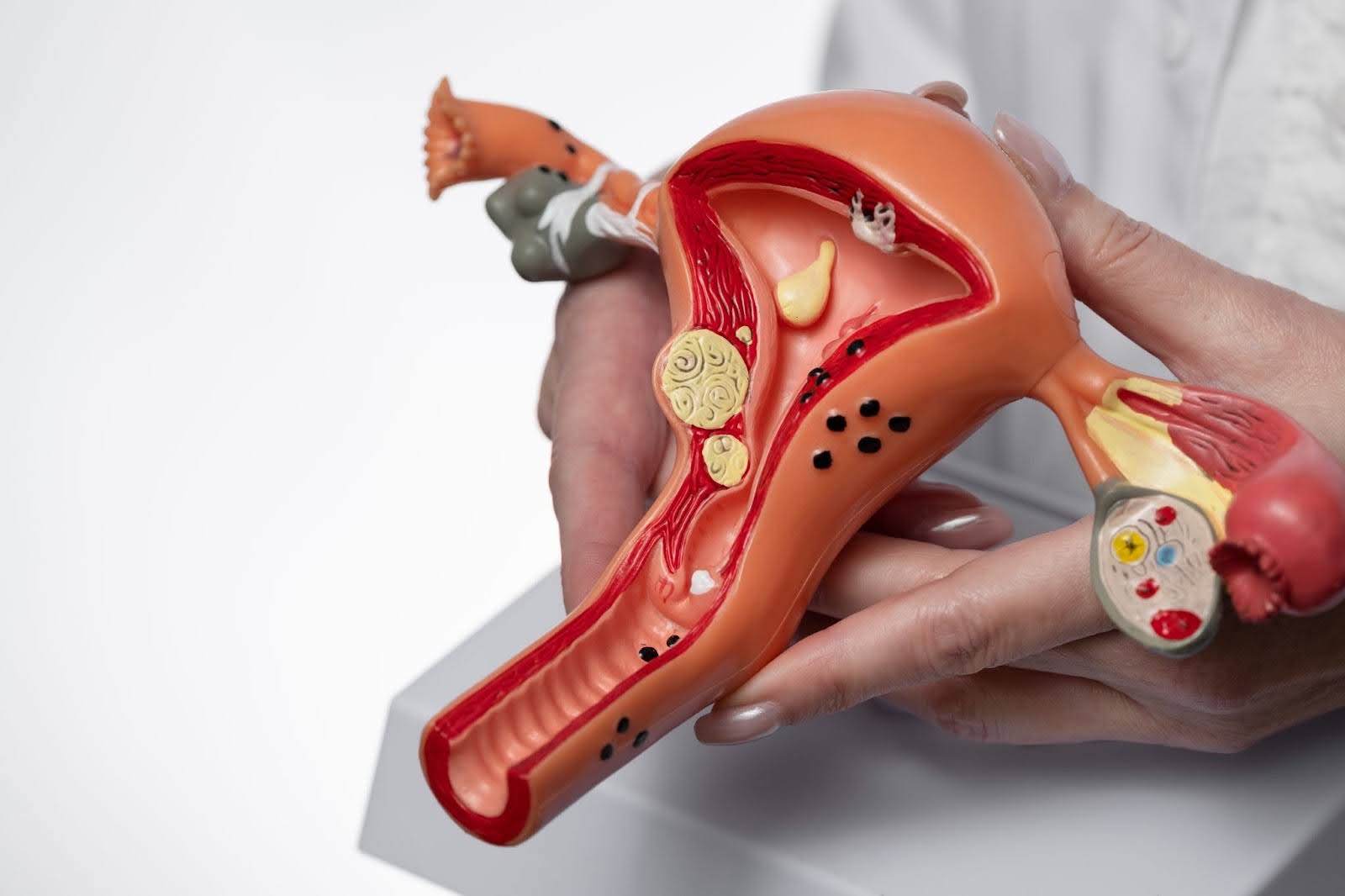Can I Take Zepbound a Day Early?
Key TakeawaysZepbound is a once-weekly injectable medication for weight management and obstructive sleep apnea (OSA) linked to obesity.Taking Zepbound a day early is [...]
Read MoreOvarian cysts are fluid-filled sacs that can form on the ovaries. While many cysts are harmless and resolve on their own, some can pose significant health risks, especially when they reach a certain size.
Understanding the implications of cyst size is crucial for women’s health. This article delves into what size of ovarian cyst is dangerous and can affect you badly.
Ovarian cysts are relatively common and can occur during a woman's menstrual cycle. They can be classified into two main categories: functional cysts and pathological cysts.
Functional cysts are typically harmless and include follicular cysts and corpus luteum cysts. Pathological cysts, on the other hand, may require medical attention.
 Types of Ovarian Cysts
Types of Ovarian CystsThere are several types of ovarian cysts, each with distinct characteristics and implications:
Follicular Cysts: These develop during the menstrual cycle and usually resolve without treatment.
Corpus Luteum Cysts: Formed after ovulation, these can persist and may cause discomfort.
Dermoid Cysts: These contain various tissues, such as hair and skin, and can grow larger over time.
Endometriomas: Associated with endometriosis, these cysts can cause significant pain and complications.
Many women with ovarian cysts experience no symptoms. However, larger cysts or those that rupture can lead to various symptoms, including:
Pelvic pain or discomfort
Abdominal bloating or swelling
Menstrual irregularities
Difficulty emptying the bladder
In some cases, women may also experience pain during intercourse or a feeling of heaviness in the abdomen. It is important to note that while many cysts are benign, persistent or worsening symptoms should prompt a consultation with a healthcare provider.
They may recommend imaging tests, such as ultrasounds, to monitor the cysts and ensure there are no underlying issues that need to be addressed.
Additionally, lifestyle factors can influence the development of ovarian cysts. Hormonal imbalances, stress, and certain dietary habits may contribute to their formation.
Maintaining a balanced diet rich in fruits, vegetables, and whole grains, along with regular exercise, can be beneficial in managing overall reproductive health.
Awareness of one’s own body and menstrual cycle can also empower women to recognize changes and seek medical advice when necessary.
 What Size is Considered Dangerous?
What Size is Considered Dangerous?While most ovarian cysts are small and benign, size can be a critical factor in determining the risk associated with them. Generally, cysts larger than 5 centimeters (cm) are considered potentially dangerous.
Small cysts, typically under 5 cm, often do not require intervention and can be monitored over time. However, once a cyst exceeds this size, the likelihood of complications increases significantly. Here’s a breakdown of the size categories:
Cyst Size: 0 – 5 cm, Risk Level: Low Risk
Cyst Size: 5 – 7 cm, Risk Level: Moderate Risk
Cyst Size: Over 7 cm, Risk Level: High Risk
As ovarian cysts grow, they can lead to several complications, including:
Rupture: A large cyst can burst, causing severe pain and internal bleeding.
Ovarian torsion: Large cysts can cause the ovary to twist, leading to loss of blood supply and potential loss of the ovary.
Pressure Symptoms: Larger cysts can exert pressure on surrounding organs, leading to urinary or gastrointestinal issues.
In addition to these complications, large ovarian cysts can also lead to hormonal imbalances. As the cyst grows, it may produce hormones that can disrupt the normal menstrual cycle, resulting in irregular periods or abnormal bleeding.
This hormonal disruption can cause a range of symptoms, including mood swings, weight gain, and even changes in skin condition.
Furthermore, persistent large cysts may require surgical intervention not only to alleviate symptoms but also to rule out malignancy, especially in postmenopausal women.
It’s important to note that the management of ovarian cysts is highly individualized. Factors such as the patient's age, medical history, and specific symptoms play a crucial role in determining the appropriate course of action.
Regular monitoring through ultrasound examinations can help assess the cyst's growth and decide whether surgical options are necessary.
In many cases, healthcare providers will recommend a watchful waiting approach for smaller cysts, while larger ones may prompt more immediate evaluation and treatment strategies.
Diagnosis of ovarian cysts typically involves a combination of medical history, physical examination, and imaging studies. Ultrasound is the most common imaging technique used to assess the size and characteristics of the cyst.
Ultrasound can provide valuable information about the cyst, including:
Size and shape
Fluid content (simple vs. complex)
Presence of solid components
These factors can help determine the risk of malignancy and guide treatment options. For instance, a simple cyst, which is typically filled with fluid and has smooth edges, is often benign and may resolve on its own.
In contrast, complex cysts, which may contain both fluid and solid areas, require closer monitoring and possibly further diagnostic procedures due to their potential association with cancer.
In some cases, blood tests may be performed to check for tumor markers, such as CA-125, which can indicate the possibility of ovarian cancer.
Elevated levels of CA-125 may warrant further investigation, especially in women over 50 or those with a family history of ovarian cancer.
Additionally, other markers such as HE4 and the Risk of Ovarian Malignancy Algorithm (ROMA) score can be utilized to enhance the accuracy of the diagnosis, providing a more comprehensive risk assessment for ovarian cancer.
It's important to note that while these tests can provide critical information, they are not definitive. Many benign conditions, including endometriosis and pelvic inflammatory disease, can also lead to elevated CA-125 levels.
Therefore, these results must be interpreted in conjunction with imaging findings and clinical symptoms, ensuring a holistic approach to diagnosis and management.
While many ovarian cysts are benign and asymptomatic, certain signs and symptoms should prompt immediate medical evaluation. These include:
Sudden, severe pelvic pain may indicate a ruptured cyst or ovarian torsion. This requires prompt medical attention to prevent complications. Ovarian torsion, in particular, occurs when an ovary twists around the ligaments that hold it in place, cutting off its blood supply.
This condition can lead to severe consequences if not treated quickly, including the loss of the affected ovary.
Patients experiencing such intense pain should seek emergency care to undergo imaging tests, such as an ultrasound, which can help determine the cause of the pain and guide treatment options.
If symptoms such as bloating, pressure, or menstrual irregularities persist or worsen, it is essential to consult a healthcare provider for further evaluation.
Persistent symptoms might indicate the presence of larger cysts or even other underlying conditions such as endometriosis or pelvic inflammatory disease.
In some cases, a healthcare provider may recommend monitoring the cysts over time with follow-up ultrasounds to assess any changes in size or appearance.
Additionally, understanding the nature of the cyst—whether functional or pathological—can help in determining the most appropriate management strategy, which may include hormonal treatments or surgical intervention if necessary.
The treatment for ovarian cysts largely depends on the size, type, and symptoms. Options may include:
For small, asymptomatic cysts, a "watchful waiting" approach may be recommended. Regular monitoring through follow-up ultrasounds can help track any changes in size or symptoms.
This method is particularly beneficial as it avoids unnecessary intervention and allows the body to naturally resolve the cysts, which often occurs without any treatment.
Patients are advised to maintain regular check-ups with their healthcare provider to ensure that any potential complications are addressed promptly.
Hormonal medications, such as birth control pills, may be prescribed to regulate the menstrual cycle and prevent the formation of new cysts.
However, they do not typically shrink existing cysts. These medications work by suppressing ovulation, which can reduce the likelihood of new cysts developing.
In addition to hormonal therapies, pain management strategies may also be discussed, particularly for those experiencing discomfort due to larger cysts.
Non-steroidal anti-inflammatory drugs (NSAIDs) can be effective in alleviating pain and improving quality of life during this time.
If a cyst is large, symptomatic, or suspected to be malignant, surgical intervention may be necessary. Options include:
Laparoscopy: A minimally invasive procedure to remove the cyst.
Laparotomy: A more extensive surgery for larger cysts or when malignancy is suspected.
In cases where surgery is indicated, the choice between laparoscopy and laparotomy often depends on the size and nature of the cyst, as well as the patient's overall health.
Laparoscopy typically involves smaller incisions, resulting in less postoperative pain and a quicker recovery time, making it a preferred option for many patients.
Conversely, laparotomy may be necessary for larger cysts that require a more thorough examination or removal of surrounding tissue.
Post-surgery, patients may require follow-up appointments to monitor healing and ensure that no further complications arise.
Additionally, discussions about fertility preservation may be pertinent for women of childbearing age, especially if the cysts are recurrent or if there is a risk of ovarian damage during surgery.
While not all ovarian cysts can be prevented, certain lifestyle choices may help reduce the risk:
Regular gynecological exams can help detect ovarian cysts early. Women should discuss any symptoms or concerns with their healthcare provider.
These check-ups often include pelvic exams, ultrasounds, and other diagnostic tests that can provide crucial information about ovarian health.
Early detection is key, as it allows for timely intervention if necessary, potentially preventing complications associated with larger or more problematic cysts.
Maintaining a balanced diet, exercising regularly, and managing stress can contribute to overall reproductive health. These factors may help regulate hormonal balance and reduce the likelihood of cyst formation.
A diet rich in fruits, vegetables, whole grains, and lean proteins supports hormonal health, while regular physical activity can enhance blood circulation and promote hormonal balance.
Additionally, practices such as yoga or meditation can significantly lower stress levels, which is essential since high stress can lead to hormonal fluctuations that may increase the risk of cyst development.
Moreover, staying hydrated and avoiding excessive consumption of processed foods and sugars can further enhance overall health.
Some studies suggest that certain vitamins and minerals, such as vitamin D and omega-3 fatty acids, may also play a role in maintaining ovarian health.
Incorporating foods like fatty fish, nuts, and seeds into your diet can provide these essential nutrients, potentially offering additional protection against cyst formation.
By making informed choices and prioritizing wellness, women can take proactive steps toward safeguarding their reproductive health.
Understanding the implications of ovarian cyst size is vital for women's health. While many cysts are harmless, those exceeding 5 cm can pose significant risks.
Regular monitoring, timely medical intervention, and lifestyle choices can help manage ovarian health effectively. Women should remain vigilant and consult healthcare providers for any concerning symptoms or changes. For quick initial assessments or guidance, Doctronic’s free AI doctor can offer helpful insights before your next clinic visit.
Key TakeawaysZepbound is a once-weekly injectable medication for weight management and obstructive sleep apnea (OSA) linked to obesity.Taking Zepbound a day early is [...]
Read MoreKey TakeawaysZepbound is an FDA-approved medication for chronic weight management in adults with obesity or overweight, and for moderate to severe obstructive sleep apnea [...]
Read MoreKey TakeawaysZepbound is a once-weekly injectable medication that supports weight loss by activating hormone pathways regulating appetite and digestion.After the first dose, [...]
Read More